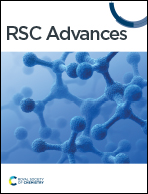Iron/iron oxide-based magneto-electrochemical sensors/biosensors for ensuring food safety: recent progress and challenges in environmental protection
Abstract
Foodborne diseases have arisen due to the globalization of industry and the increase in urban population, which has led to increased demand for food and has ultimately endangered the quality of food. Foodborne diseases have caused some of the most common public health problems and led to significant social and economic issues worldwide. Food quality and safety are affected by microbial contaminants, growth-promoting feed additives (β-agonists and antibiotics), food allergens, and toxins in different stages from harvesting to storage and marketing of products. Electrochemical biosensors, due to their reduced size and portability, low cost, and low consumption of reagents and samples, can quickly provide valuable quantitative and qualitative information about food contamination. In this regard, using nanomaterials can increase the sensitivity of the assessment. Magnetic nanoparticle (MNP)-based biosensors, especially, are receiving significant attention due to their low-cost production, physicochemical stability, biocompatibility, and eco-friendly catalytic characteristics, along with magnetic, biological, chemical and electronic sensing features. Here, we provide a review on the application of iron-based magnetic nanoparticles in the electrochemical sensing of food contamination. The types of nanomaterials used in order to improve the methods and increase the sensitivity of the methods have been discussed. Then, we stated the advantages and limitations of each method and tried to state the research gaps for each platform/method. Finally, the role of microfluidic and smartphone-based methods in the rapid detection of food contamination is stated. Then, various techniques like label-free and labelled regimes for the sensitive monitoring of food contamination were surveyed. Next, the critical role of antibody, aptamer, peptide, enzyme, DNA, cells and so on for the construction of specific bioreceptors for individual and simultaneous recognition by electrochemical methods for food contamination were discussed. Finally, integration of novel technologies such as microfluidic and smartphones for the identification of food contaminations were investigated. It is important to point out that, in the last part of each sub-section, attained results of different reports for each strategy were compared and advantages/limitations were mentioned.

- This article is part of the themed collection: 2023 Reviews in RSC Advances


 Please wait while we load your content...
Please wait while we load your content...